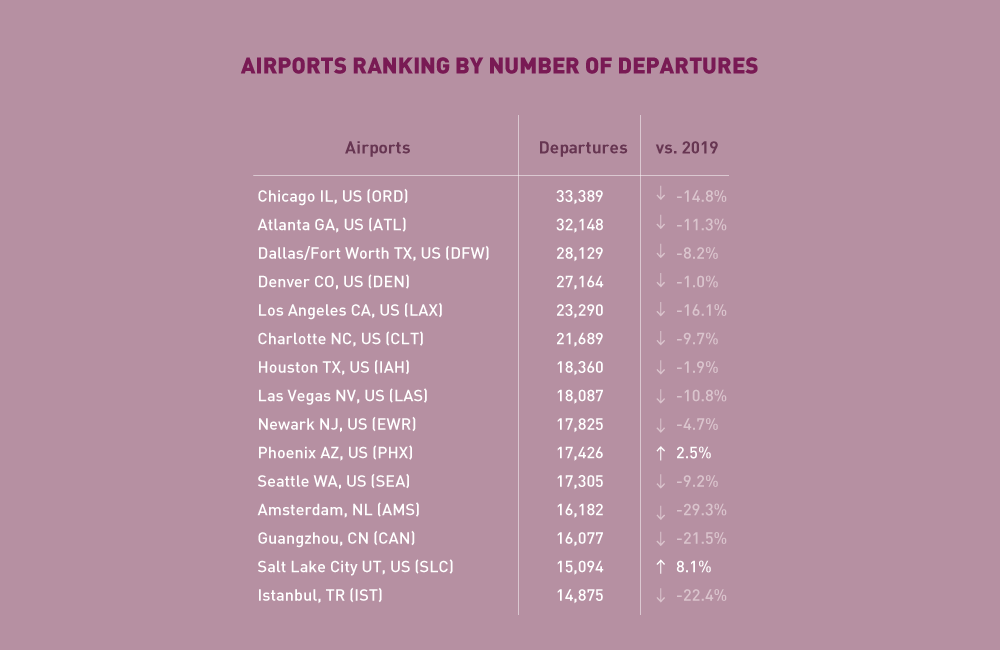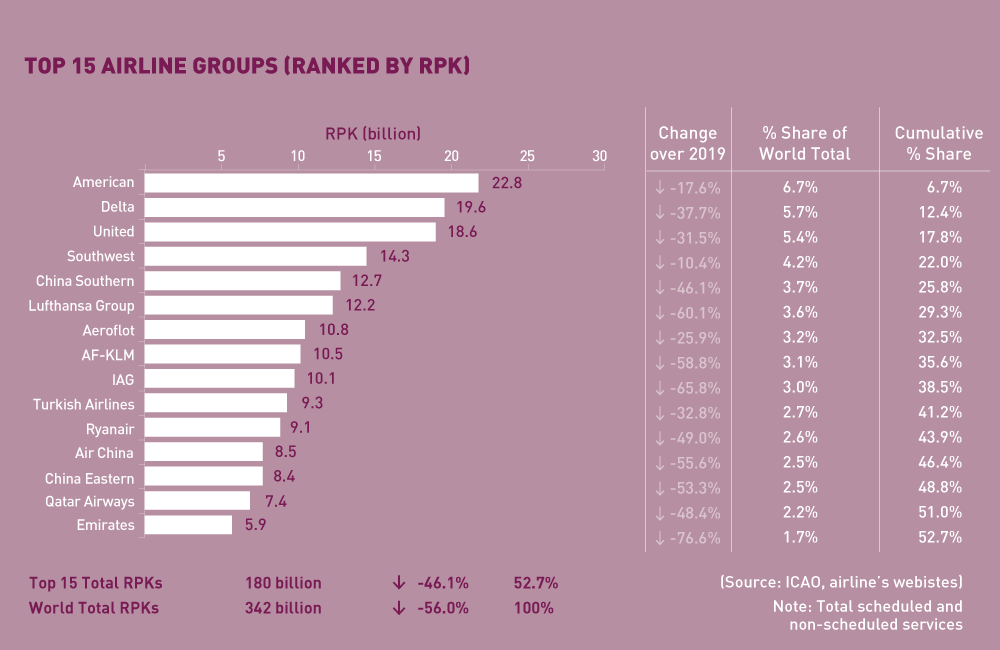The air transport industry is not only a vital engine of global socio-economic growth, but it is also of vital importance as a catalyst for economic development. Not only does the industry create direct and indirect employment and support tourism and local businesses, but it also stimulates foreign investment and international trade.
Informed decision-making is the foundation upon which successful businesses are built. In a fast-growing industry like aviation, planners and investors require the most comprehensive, up-to-date, and reliable data. ICAO’s aviation data/statistics programme provides accurate, reliable and consistent aviation data so that States, international organizations, the aviation industry, tourism and other stakeholders can:
- make better projections;
- control costs and risks;
- improve business valuations; and
- benchmark performance.
The UN recognized ICAO as the central agency responsible for the collection, analysis, publication, standardization, improvement and dissemination of statistics pertaining to civil aviation. Because of its status as a UN specialized agency, ICAO remains independent from outside influences and is committed to consistently offering comprehensive and objective data. Every month ICAO produces this Air Transport Monitor, a monthly snapshot and analysis of the economic and aviation indicators.
ECONOMIC DEVELOPMENT – November 2021
World Results and Analyses for September 2021
Total Scheduled Services (Domestic and International)
Passenger traffic
 Revenue Passenger-Kilometres – RPK
Revenue Passenger-Kilometres – RPK
World passenger traffic fell by -53.4% in September 2021 (compared to 2019), +2.6 percentage points up from the decline in the previous month. Air travel improved slightly from the deterioration in August, mainly owing to the uptick in domestic travel, particularly the rebound in Chinese domestic market. Conversely, the fall in traffic worsened in some regions such as Africa and Europe. The momentum of air travel recovery appeared to wane towards the end of the summer season, however, the positive vaccination progress is likely to support the recovery in the coming months.
 International Traffic vs. Tourist Arrivals
International Traffic vs. Tourist Arrivals
International passenger numbers fell by -63.0% in September 2021 (compared to 2019), +0.6 percentage point up from the decline in the previous month. International travel recovery has paused across all regions, partially attributed to the weakened demand in the less busy travel season. The recovery in international tourist arrivals also stalled and followed a similar trend as international passenger traffic.
Capacity
 Available Seat-Kilometres – ASK
Available Seat-Kilometres – ASK
Capacity worldwide fell by -43.6% in September 2021 (compared to 2019), +2.6 percentage points up from the decline in the previous month (-46.2%). With signs of easing restrictions, airlines are gradually adding capacity back to the market. Thus, the September capacity is expected to improve to -40.3% down from the 2019 levels.
Load Factor
 The passenger Load Factor reached 67.6% in September 2021, -2.4 percentage points lower than the previous month. Load factor continues to trend downwards as the return of capacity was faster than the recovery of travel demand. The September LF remained significantly below 2019 levels at -14.3 percentage points lower.
The passenger Load Factor reached 67.6% in September 2021, -2.4 percentage points lower than the previous month. Load factor continues to trend downwards as the return of capacity was faster than the recovery of travel demand. The September LF remained significantly below 2019 levels at -14.3 percentage points lower.
Freight Traffic
 Freight Tonne-Kilometres – FTK
Freight Tonne-Kilometres – FTK
World freight traffic reported a growth of +9.1% in September 2021 (compared to 2019), +1.4 percentage points up from the growth in the previous month. Air cargo has benefited from the global supply chain congestion as businesses have been shifting volume from ocean to air in order to avoid long delivery times and delays. The strong demand in goods and businesses restocking inventories to prepare for the upcoming peak consumer events will continue to support air cargo growth in the months ahead. Performance by region was a mix. Whereas Africa, North America and the Middle East demonstrated robust growth, the other regions saw either no improvement or deterioration. Latin America/Caribbean remained the weakest performing region with a contraction of over -10% from the 2019 levels.
Top 15 Airports (Ranked by aircraft departures, passengers, and volume of freight)
Note: Figures include total scheduled and non-scheduled services
September 2021: –10.8%, -23.7%, and +14.2% (vs. 2019) in terms of aircraft departures, passengers and freight for the Top 15
 In terms of aircraft departures, the Top 15 airports reported a combined fall of -10.8%, compared to 2019. All the Top 15 airports, except three, were US airports. Chicago remained 1st with a decline of -14.8%. The three non-US airports posted the largest fall among the Top 15, i.e. Amsterdam (-29.3%), Istanbul (-22.4%) and Guangzhou (-21.5%).
In terms of aircraft departures, the Top 15 airports reported a combined fall of -10.8%, compared to 2019. All the Top 15 airports, except three, were US airports. Chicago remained 1st with a decline of -14.8%. The three non-US airports posted the largest fall among the Top 15, i.e. Amsterdam (-29.3%), Istanbul (-22.4%) and Guangzhou (-21.5%).
 In terms of passengers, the Top 15 airports posted a total fall of -23.7%, compared to 2019. The Top 15 list has a mix of airports from North America, Europe and Asia/Pacific. Owing to the improvements in domestic travel, New Delhi, Guangzhou and Shenzhen re-appeared in the Top 15. Three US airports, Phoenix, Denver and Charlotte, recorded the smallest fall of less than -10%.
In terms of passengers, the Top 15 airports posted a total fall of -23.7%, compared to 2019. The Top 15 list has a mix of airports from North America, Europe and Asia/Pacific. Owing to the improvements in domestic travel, New Delhi, Guangzhou and Shenzhen re-appeared in the Top 15. Three US airports, Phoenix, Denver and Charlotte, recorded the smallest fall of less than -10%.
 In terms of freight, the Top 15 airports reported an increase of +14.2%, compared to 2019. Hong Kong retained the 1st position with solid growth of +13.8%. The majority of the Top 15 airports grew double-digitally, with the strongest increase in Los Angeles at +32.6%. For the first time of the year, Shanghai posted a significant decline at -20.3%.
In terms of freight, the Top 15 airports reported an increase of +14.2%, compared to 2019. Hong Kong retained the 1st position with solid growth of +13.8%. The majority of the Top 15 airports grew double-digitally, with the strongest increase in Los Angeles at +32.6%. For the first time of the year, Shanghai posted a significant decline at -20.3%.
Top 15 Airline Groups (Ranked by RPK)
 September 2021: -46.1% (vs. 2019) in terms of RPK for the Top 15
September 2021: -46.1% (vs. 2019) in terms of RPK for the Top 15
In terms of RPK, the Top 15 airline groups accounted for 52.7% of the world’s total RPK in September 2021 and declined by –46.1% compared to 2019. This decline was 9.9 percentage points smaller than the fall in the world’s average RPK. Top 15 ranking changed dramatically again compared to August, due to the rebound of the Chinese domestic travel after the weakness and the pause in recovery in some other regions.
The performance of the US airlines has been relatively stable. The Top 4 positions were maintained by American, Delta, United and Southwest. American and Southwest posted much smaller declines from 2019 levels.
After experiencing the temporary dip, domestic passenger traffic in China picked up. Consequently, the ranking of the Chinese airlines improved, with China Southern and Air China up by 7 and 3 positions to 5th and 12th, respectively. China Eastern returned to the Top 15 and ranked 13th.
As the positive impetus from the peak summer travel demand started to diminish, traffic recovery in Europe weakened. Except for Aeroflot, rankings of all other European airlines within the Top 15 dropped. Lufthansa ranked 1 position down to 6th, after China Southern.
Qatar Airways and Emirates moved down to 14th and 15th, respectively. The latter has also recorded the largest contraction from 2019 levels, among all the Top 15 airlines.
 Worldwide capacity contracted by -43.6% in September 2021, compared to 2019, a moderate improvement from the contraction in August. This rebound was mostly attributed to the increase in Asia/Pacific, in particular the Chinese domestic capacity. Capacity contraction eased in all other regions, except for Europe which posted a slightly larger fall.
Worldwide capacity contracted by -43.6% in September 2021, compared to 2019, a moderate improvement from the contraction in August. This rebound was mostly attributed to the increase in Asia/Pacific, in particular the Chinese domestic capacity. Capacity contraction eased in all other regions, except for Europe which posted a slightly larger fall.
Click here to download the Monthly Monitor in a PDF version.
For any queries for further information, please contact the ICAO Economic Development (ECD), Air Transport Bureau ecd@icao.int
Acronyms: ACI: Airports Council International; ASK: Available Seat-Kilometres; IATA: International Air Transport Association; FTK: Freight Tonne-Kilometres; LF: Passenger Load Factor; OAG: Official Airline Guide; RPK: Revenue Passenger-Kilometres; UNWTO: World Tourism Organization; YoY: Year-on-year; YTD: Year-to-date.

